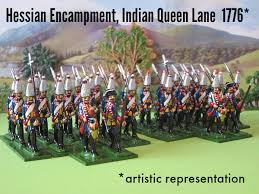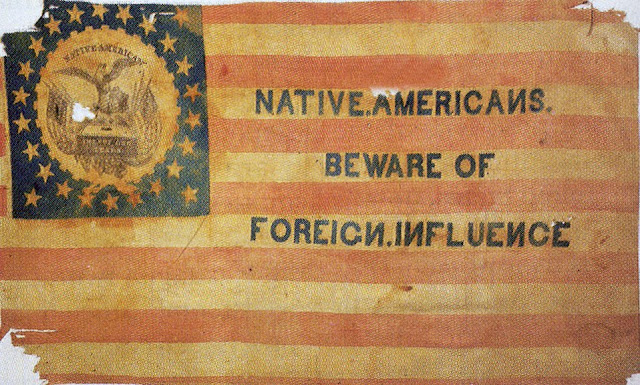Why did John's and Elizabeth's parents take
the perilous journey with their young children to America? One thing is for certain:
they were in good company. Even before the great immigration of the mid-19th
century, Germans represented 9% of the American population. Pennsylvania's population was
one-third German by the time of the American Revolution (1775–83). And mid-19th century, numbers exploded:
- · In the 1850's, 1 million Germans
immigrated to the US
- · In the 1870's, 723,000 more immigrated
- · In the 1880's, 1,445,000 more
immigrated
Today, 49 million
American claim German ancestry, the largest single ethnic group (may have been
eclipsed by Hispanics this year). They came for three major reasons:
- · Religious freedom
- · Political instability and repression in
Germany
- · Economic opportunity
The Wagners/Steiners/Kroemers are
typical of a majority of German immigrants:
- · They were Protestant (probably Lutheran)
- · They came from Baden district in southwest
Germany
- · They traveled by clipper ship out of a major
emigration port and arrived in New York
- · They came mid-century when German immigration was at its zenith
- · They were craftsmen looking for better working
conditions and opportunities
- · They settled in German enclaves in a major city
- · They purchased property as soon as they could
- · They apparently arrived with some capital, for
transportation and setting-up money.
German immigrants played a major part in
the development of early America due to their sheer numbers and their skills.
Religion
The earliest German immigrants (1600's) were
Anabaptists (Mennonite, Amish, Quaker). They believed that the rituals and
politics of existing churches in Europe were a hindrance to true faith and
worship. A majority of immigrants throughout the 19th century were Lutherans. A healthy sized minority were Jews from about 1830 when anti-Semitism
became rampant in Germany. Large groups of Catholics came after the May Laws of
the 1870's.
Political
Instability
Young men emigrated to escape military conscription
(ironic because they lept right into the Civil War.)
During the American Revolution (1775–83), King George III purchased the services of approximately thirty thousand
soldiers from the German states and shipped them to America to fight. Because
there were so many soldiers from Hesse-Kassel, all the Germans fighting on the
British side came to be called Hessians by the Americans. The prince of
Hesse-Kassel sold at least twelve thousand soldiers to King George, receiving a
significant sum per head. The prince did not pay the soldiers, however, and
many of them had been forced into the service against their will. About six
thousand Hessians deserted the British army and fought on the side of the
colonists. After the war was over, as many as twelve thousand of these soldiers
stayed in the new country and became U.S. citizens. This was made easier for
them because there was already a fairly substantial German American population
that they could join.

In the 19th century, Germany suffered political upheaval as
independent municipalities were consolidating for form a unified German state. Some political dissidents escaped Germany
during this time. They were writers and intellectuals and were educated in the
best schools in Europe. They became leaders in the educational community in
America.
Economics
The search for a better life drove the majority of
Germans to make the move. Most were
craftsmen or farmers. They were pressured to leave by a poor economy and the industrial revolution. The old way of rural life was quickly
disappearing. Yet,
with unemployment in Germany rising, the cities did not always hold much hope.
In the early days, German
migrants came here on the redemption system: German peasants would receive free passage to America but would be
required to work for a businessman for 4-7 years to repay the cost of the
voyage. Many were awarded land to encourage migration. Shipping companies would
travel through German towns with bright colored wagons professing the good life
across the Atlantic. And they succeeded in attracting millions of
German citizens. Word
also got back that Germans did well here. German princes sponsored societies (in
the 1830's and 40's) that provided one way tickets to the poor with the idea
that in the long run it was cheaper than long-term subsidies.
German craftsmen brought the guild
system to America and were major contributors to the growth of the labor movement
and unionization to America.
Assimilation
Early German settlers stuck together.
Living in a dense concentration of German-speaking people, the
Pennsylvania Dutch maintained old-world language and customs. Their language
was, and in some places still is today, the same basic language used in the
Palatinate in Germany, with a little standard German and English mixed in. The
Amish in areas like Lancaster, Pennsylvania, who make up a very small portion
of the Pennsylvania Dutch, have maintained a culture apart from mainstream
Americans right up to modern times.

During later migrations, many new German Americans successfully resisted
assimilating into American culture for
many years. Until World War I (1914–18),
millions of German Americans continued to speak their language. Many lived
in German-speaking enclaves, and even those who did not tried to maintain their
native language. German Americans took political action to make sure their
children could be educated in the German language. In 1881 approximately 1 million children attended schools with all or part of the curriculum taught in German (42% of that total were being educated in the public school system.)The sheer numbers of people
and the desire to keep cultural roots isolated them from English language and
customs. It was easy to find German mates. But
census data shows that neighborhoods housing our ancestors were Irish, British, and some native
born Americans.
The Journey
It was a dangerous and difficult trip across the
Atlantic. Germans began the journey by making their way to a port city. The
Wagners traveled to Havre in France and boarded the Duchess d"Orleans, a
clipper ship in 1849. The ship made three round trips in a year and human
passage made good money for the ship owners. During the high peaks of
emigration there was a steady flow of traffic on the roads to the ports made up
of families pushing carts loaded with their belongings. They were often robbed
or swindled when they arrived in ports.

The conditions on the sailing ships that took the
German immigrants across the Atlantic were terrible. Many people could not
afford to purchase a first- or second-class ticket, and so they traveled in
steerage, in the lower decks of the ship that were designed to carry cargo.
Aside from being miserably overcrowded, the accommodations often lacked clean
drinking water and adequate toilet and washing facilities. Rats, head lice, and
bedbugs were common, and infectious diseases spread quickly. In the years
after, steamships would shorten the voyage and regulations on ships would
correct some of the worst abuses of travelers. Even so, throughout the
eighteenth and nineteenth centuries, many immigrants faced misery and even
death to get to the United States.
Stereotypes and Prejudice
German immigrants came from all over
Germany, although the first wave came from Bavaria. Bavarian traditions include
most of our Christmas traditions, traditional dress and dance. Some of those simplistic
assumptions about German culture remain today (durndall skirts, leiderhosen, beer drinking, fat, etc.)

In
the 1840s, nativist groups (organizations that promoted the rights of the
native-born as opposed to immigrants) took up an anti-immigrant, particularly
anti-Catholic, campaign. One of the primary nativist organizations was the American Party,
which promoted "traditional American ideals" and claimed that
immigrants were threatening to destroy American values and democracy. The
party, originally called the Know-Nothing Party (because when asked what their
political agenda was, members of the secretive party would say they knew
nothing about it), mounted very successful political campaigns across the
nation. Nativist politicians called for restricting the rights of aliens (who live and work legally in the
country but are not citizens) and foreign-born citizens, especially with
respect to voting and holding political office. Their primary target were Irish Americans who were
immigrating in great numbers at the same time as the Germans.
With a different language, customs, and in some cases, a different set of
religious or political beliefs, Germans were viewed by some as foreign and
therefore dangerous. Many German Americans were Catholics, another target of
the Know-Nothings, who claimed that the pope was conspiring to get political
control in the United States. Some Americans, too, were beginning to feel the
intense competition from German American tradesmen and merchants.
Among the Germans who immigrated after the 1848 revolutions were quite a few politically radical intellectuals who continued to
pursue their ideals in the United States. The political reformers were
viewed as radical extremists
By the mid-1850s, the Know-Nothing Party was so
popular that its candidates had been elected to important political offices. German Americans, who were typically divided
amongst themselves, united in their efforts to fight back against the
discrimination directed at them. They were greatly aided by mounting tensions
over the issue of slavery in the United States, which divided the Know-Nothing
supporters and weakened them as a political group.
Summary
From what we
know, the new German immigrants did not have it easy. The trip was terrible,
early housing in the cities were tenements, and work was not easy to get.
Farmers may have had it easier in the country, but farming is unstable financially
and is back breaking work. The Germans
did not speak English and encountered prejudice like many newly arrived
cultures. But they had numbers on their side. And many had a good set of
skills, values of hard work, education and saving. And they maintained their
determination with the help of a strong
community of support. The astonishing growth of the country in the 19th century
provided economic opportunity, and education for their children. They overall
represent the quintessential American success story.



















